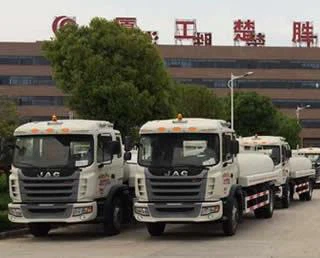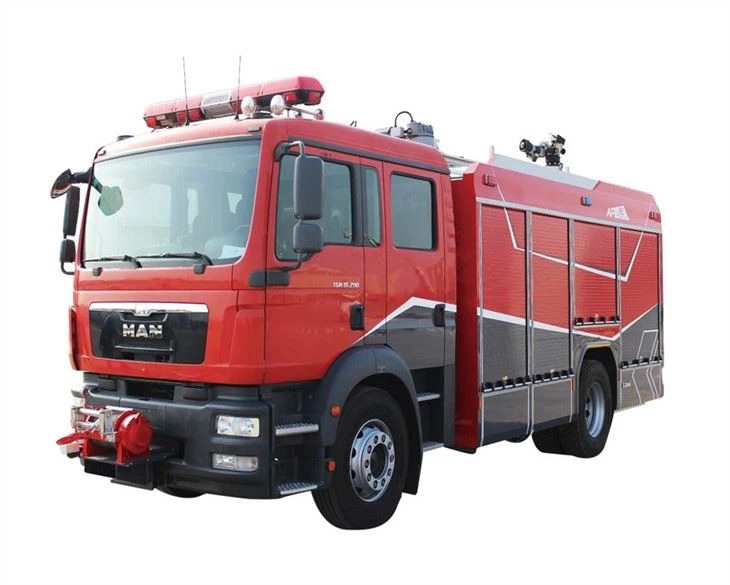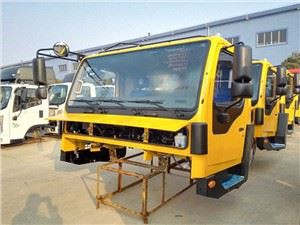Everything You Need to Know About Side Load Trucks

Introduction
Side load trucks, often seen in waste management and delivery services, play a crucial role in modern logistics. These vehicles are designed for efficiency, convenience, and safety, making them ideal for transporting goods in urban environments. Whether you’re a logistics manager, a business owner, or simply curious about how these trucks work, this article will provide a comprehensive look into the world of side load trucks, their benefits, and their operations.
What Are Side Load Trucks?

Side load trucks are specialized vehicles designed to collect or transport materials, primarily waste and recyclable materials. These trucks feature innovative side-loading mechanisms that allow for efficient pick-up without necessitating space behind the truck. This can be particularly advantageous in dense urban environments where space is limited.
Different Types of Side Load Trucks
There are various types of side load trucks, each designed for specific functions:
- Manual Side Load Trucks: Operated by a single driver who manually loads the materials into the truck.
- Automated Side Load Trucks: Equipped with robotic arms for automated loading, increasing efficiency and safety.
- Rear Loader Versatile Side Load Trucks: Combines features from both side and rear loaders for maximum flexibility.
Key Features of Side Load Trucks
1. Loading Mechanism
The side-loading mechanism is the hallmark of these trucks. It allows for the loading of materials from the side, making it easier to operate in tight spaces.
2. Design and Capacity
Side load trucks come in various sizes, usually ranging from 10 to 40 cubic yards. The design typically includes:
- Robust containers
- A hydraulic lifting system
- Safety features to protect the driver and bystanders
3. Maneuverability
These trucks are often designed to be more compact and maneuverable than traditional rear loaders, making them suitable for urban environments.
Advantages of Using Side Load Trucks
Improved Efficiency
The side loading feature allows for faster pick-up times, which can significantly improve overall operational efficiency. Businesses can cover larger areas in less time.
Space Optimization

In areas where space is tight, side load trucks utilize space effectively, reducing the need for additional road space for loading.
Enhanced Safety
With a side load truck, ground-level loading minimizes the risk of accidents associated with lifting and dumping materials from the back.
Cost-Effectiveness
By improving operational efficiency and safety, businesses can reduce labor costs and potentially lower vehicle maintenance expenses.
Common Applications of Side Load Trucks
Waste Management
Side load trucks are commonly used for collecting residential waste and recycling materials. Their design allows easy access to curbside bins.
Delivery Services
In the delivery sector, side load trucks facilitate efficient drop-off and pick-up operations, especially in densely populated areas.
Construction and Demolition
These trucks are also beneficial for transporting materials to and from construction sites, especially when space constraints exist.
How to Choose the Right Side Load Truck
1. Assess Your Needs
Identify the type of materials you’ll be transporting and the volume of waste collected to determine the size and type of truck required.
2. Consider Your Operating Environment
Evaluate the spaces in which the truck will operate. Side load trucks are advantageous in urban areas with limited space.
3. Budget Constraints

Determine your budget. While side load trucks can be more expensive upfront, consider long-term savings in efficiency and maintenance.
4. Maintenance and Support
Research manufacturers and review their support services. Reliable maintenance is vital to avoid downtime.
Top Brands and Models of Side Load Trucks
| Brand | Model | Features | Capacity |
|---|---|---|---|
| Freightliner | M2 106 | Durable, excellent visibility | 20 – 35 cubic yards |
| Peterbilt | 320 | High maneuverability, customizable | 20 – 40 cubic yards |
| Kenworth | T270 | Strong frame, efficient fuel use | 15 – 30 cubic yards |
Maintenance Tips for Side Load Trucks
Regular Inspections
Conduct regular inspections of the hydraulic systems, lifting mechanisms, and overall truck condition to catch potential issues early.
Keeping Components Lubricated
Lubricate moving parts to ensure that the loading mechanism operates smoothly and to prevent wear and tear.
Check Tire Pressure and Condition
Regularly check and maintain tire pressure to ensure safety and improve fuel efficiency.
Future of Side Load Trucks
Technological Advancements
New technologies, such as electric side load trucks and improved robotic loading systems, are reshaping the industry landscape, offering more sustainable options.
Increased Urbanization
As cities continue to grow, the demand for space-efficient, environmentally-friendly side load trucks will likely increase, promoting innovation in design and function.
Frequently Asked Questions (FAQ)
1. What is the primary use of side load trucks?
Side load trucks are primarily used for waste management and recycling, allowing for efficient pick-up and delivery in tight spaces.
2. How do side load trucks work?
Side load trucks have a mechanical or hydraulic side-loading mechanism that allows them to pick materials from the side rather than from the rear.
3. What are the benefits of using side load trucks over traditional rear loaders?
Side load trucks are more maneuverable, safer, and often more efficient in terms of loading time, especially in urban environments.
4. Are side load trucks difficult to operate?
Most modern side load trucks come with user-friendly interfaces, and training programs are available to assist operators in learning how to use them effectively.
5. What maintenance do side load trucks require?
Regular inspections, lubrication of moving parts, tire pressure checks, and overall mechanical assessments are essential for maintaining side load trucks.
6. Can side load trucks be used in all environments?
While side load trucks are designed for urban environments, they can also be utilized in rural areas, though operational efficiency may vary based on terrain and road conditions.
